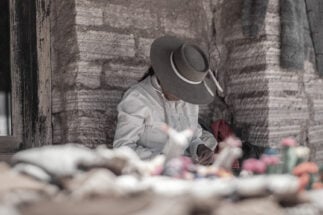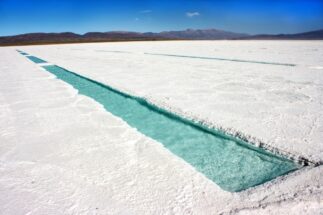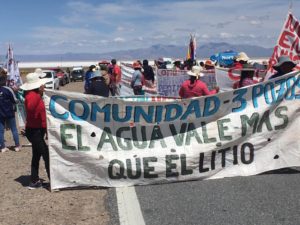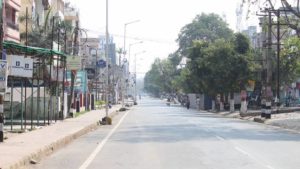For some years, the Puna desert in North Argentina has been experiencing a particular mutation. Near the crossroads of national routes 52 and 70, at a height of 4,000 mts, a bunch of channels spread out for 14 kilometers connecting the Cauchari–Olaroz basin with the lithium carbonate plant owned by Exar, a mining company. They are about the width of a person and, in 2021, when extraction starts, thousands of liters of brine per day will go through them until reaching the evaporation stream pools.
Once they have dried, the lithium carbonate will go to several destinations, mainly the United States, China and Japan. These countries are going to convert it into lithium ion to be used by almost the entire light technological industry we carry in our backpacks: tablets, cellphones, notebooks and, in particular, the production of batteries for electrical cars. Exar’s forecasts (owned by Chinese and Canadian capitals) indicates that this basin has reserves to produce a total of 40,000 tons of lithium carbonate a year for 40 years and they have already announced an initial investment of USD 565 million. Just in the Jujuy province, 13 projects of this kind are now operational.
Cristian Aragón is 55 years old and owns a contractor company that sells mining extraction supplies, in particular for works in the salt flats. In this project, he is responsible for building a part of the external pipe through which Exar is going to transport the brine.
Now, he stands in the security cabin that controls the employee’s access to Exar’s plant. He is waiting for a ride, smokes, and wears black sunglasses, a grey shirt, a silk kerchief around the neck, blue jeans, working boots, and carries a crocodile leather bag that matches another couple of boots made of the same material.
On the other side of the cabin, around 2 kilometers from there, 24 stream pools (300 m x 2 km each) are ready. Cristian comes from Santiago de Chile, but has been living in Susques for several years, a locality that serves as temporary base for area miners and companies, such as Sales de Jujuy, which already extracts lithium carbonate from the Olaroz salt flat, or Southern Lithium, which is going to start building its camp in the Cauchari salt flat in march this year. Cristian will work in the project for another year, but he does not want to go back to Chile. Before taking the bus of the Jujuy Ministry of Culture and Tourism, he says he does not miss his country. He takes one last puff until burning the filter and smiles:
—I came here to become a millionaire, dude.
***
Just some decades ago, lithium started to be recognised at a global scale due to its capacity for energy storage. It errupted into the world market on a specific date and with a specific brand and model: In 1991, Sony presented a handheld video camera that, unlike previous ones, bore a smaller, lighter and longer-lasting battery, the three key elements for the boom.
From this point on, the lithium market grew and became present in each innovation: cellphones, tablets, laptops, digital cameras, and electric cars. Without them, Samsung would be unimaginable. Apple would not exist as we know it today, nor the electric car market that currently accounts for 40% of the worldwide lithium demand. That is maybe the reason why chemists Akira Yoshino and Stanley Whittingham and physicist John B. Goodenough – the fathers who collaborated in different moments and laboratories for this energy storage creature to exist – won the 2019 Nobel prize for chemistry.
Many things are said about lithium: The future white gold, the starlet mineral of the next 50 years, the oil of the 21st century, the mineral that will redeem over two centuries of fossil fuels once they exhaust. It is said that the reserves shared by Chile, Argentina and Bolivia are enough for the whole region to hold the title of the c“Lithium Saudi Arabia.” Some people find this name synonymous with development, some others disbelieve the promise unless a thorough prior discussion on the energy transition occurs. The truth is that, from the beginning of the century, the lithium carbonate value per ton increased tenfold, to USD 16,100 in 2018 from USD 1,560 in 2002.
Nowadays, the countries competing for the primary resource are in the north of the planet: China, South Korea, the United States, Germany and Japan. But it is the Asian countries – mainly China – that produce the greatest added value: They import or extract the raw material, manufacture industrial and technological goods with it for domestic consumption and also for exports, even to the United States and Europe. About 50% of the supply in the world battery market comes from Asia. They are winning the innovation race: the energy transition is based in Shanghai.
***
Like every day, on the morning of February 4, 2019, Inés Lamas got on her motorcycle. The sun was beginning to clear the hills of the Jujuyan Puna. As usual, she rode 35 kilometers of gravel road up to the shopping stand located on the side of National Route 52, near Salinas Grandes.
In that area, East of National Route 40, in Salinas Grandes and the Guayatayoc Lagoon, is the main focus of the Australian, Dutch, Canadian, Chinese and Japanese mining companies.
That day, Inés did not make a stop to sell llama sweaters or to offer herself as a guide to the salt flats. This time, she continued to the Guayatayoc Lagoon, North of the salt flats. Along with her, 200 people arrived from all local Kolla indigenous communities that were alerted: The lagoon was being dug to find out if lithium could be extracted.
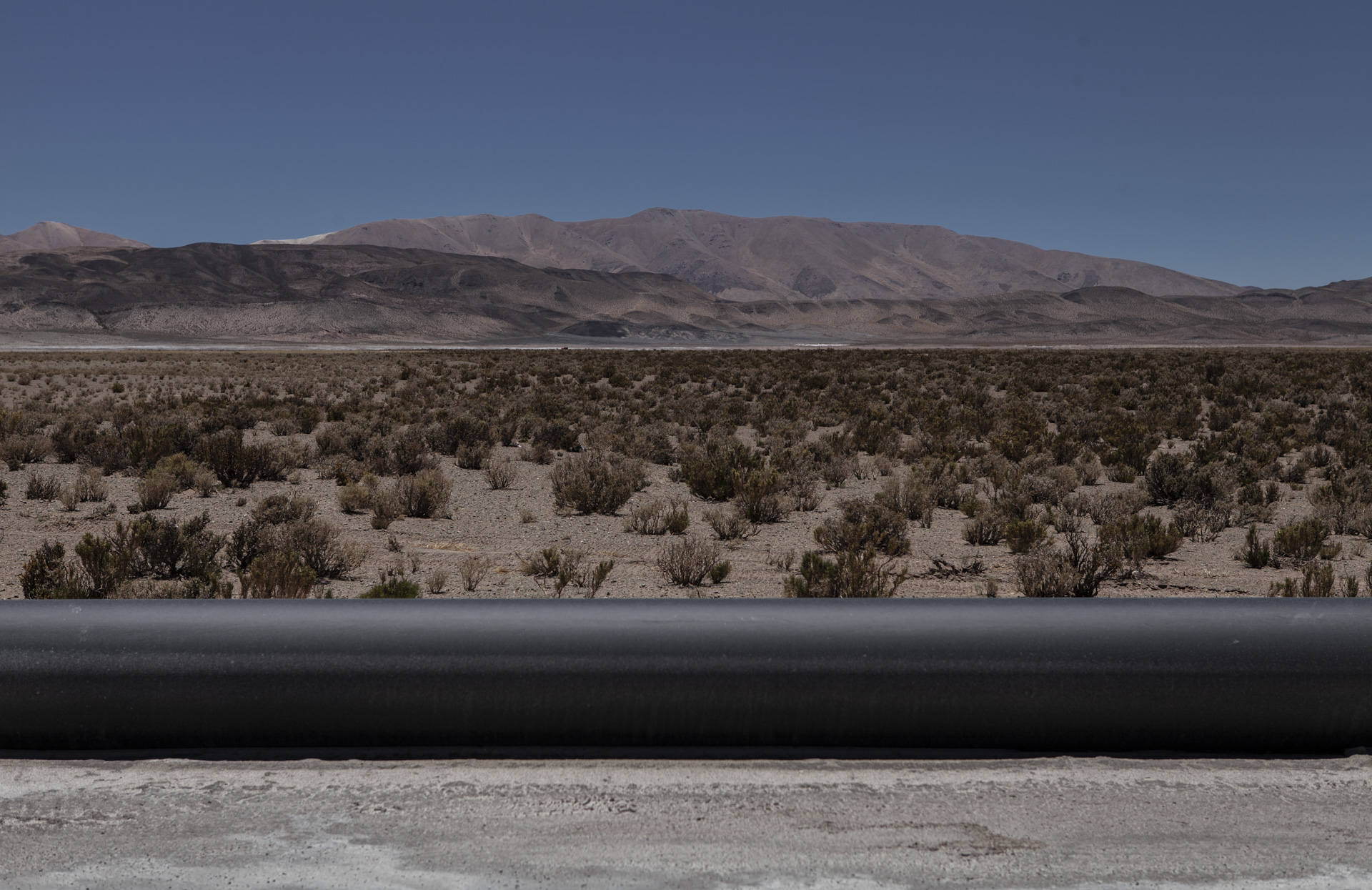
The white gold mystery had been talked about in the area for almost 20 years. Now, it was materializing in trucks and drills. When the workers of the Ekeko mining company saw the crowd approaching, they dropped their tools. The demand was non-negotiable: “No to lithium.”
— As soon as we heard that they were digging — says Inés —, all of our communities went to tell them that we had never given them consent. We camped out on the site and gave them seven days to leave.
The Salinas Grandes working group — where the leaders met monthly — was broadened with the residents and community members of the 33 communities that live in the area and became the Permanent Assembly of the Salinas Grandes Basin – Guayatayoc Lagoon. Its members decided to stay until the workers left, by which time they had already dug three wells in the lagoon.
After several days of camping and protests, Ekeko — owned by Daniel Galli and Carlos Sorentino — withdrew its workforce from the place.
The Ekeko is a mythical figure of the Andean culture, linked to abundance, fertility and joy. The contractor took his name to be the outpost of another mining company, the Canadian AIS Resources, which intended to begin mining lithium in the lagoon.
Inés is 47 years old. She sells small wool ekekos, which evoke the god of fertility and are far from being associated with the mining contractor. She never takes off her sunglasses. She wears a hat and a red polar fleece. Here, in this white desert, cut by grooves at a height of 4,096 meters, a cold sun relentlessly chaps skin and eyes.
***
Together with Bolivia and Chile, Argentina is part of the lithium triangle, where — according to the U.S. Geological Survey — 67% of the world’s reserves are located. In Argentina, the Salta, Jujuy and Catamarca provinces share the distribution of the resource in brine. The first project in the country began in Catamarca in 1998 with the U.S. Frontera Mining Corporation (FMC), which currently extracts lithium from the Hombre Muerto salt flat at a rate of 22,500 tons per year.
The second is Sales de Jujuy, which has been extracting lithium carbonate from the Olaroz salt flat — 50 km from Salinas Grandes — since 2015, thanks largely to the investment of Australian company Orocobre and Japanese car manufacturer Toyota. With JEMSE participating in the project, Jujuy province has an 8.5% share. In 40 years, the company expects to produce 6.4 million tons of lithium carbonate. It already produces 17,500 annually and hopes to reach 25,000. In addition, they estimate they extract 19.3 million tons of potassium, like most mining companies working in the Argentine salt flats, as it is the second most concentrated mineral in the brine.
For now, only FMC and Sales de Jujuy extract and export lithium carbonate. The Olaroz-Cauchari and Salar del Rincón projects in Salta are the closest to imitating them and starting activities: When operative, the country could come to export 130,000 tons per year. Another seven are advanced, in the pre-feasibility stage. And there are over 50 initiatives: In total, they cover 8,760 km2 of the country’s salt flats, almost 43 times the surface of the City of Buenos Aires.
In the sea of millions, the immensity of the Salinas Grandes – Guayatayoc Lagoon basin awakens the appetite of the world’s mining companies. It covers an area of approximately 17,522 km2 and goes from the South of San Antonio de los Cobres, in Salta province, to the North of Abra Pampa, in Jujuy province.
Alicia Chalabe was working on environmental conflicts in the town of Abra Pampa in Jujuy when, in 2009, the Santuario de Tres Pozos community contacted her for advice to face a foreign company that wanted to enter and explore their territory. Since then, she has become the communities’ lawyer.
In the case of Salinas Grandes – Guayatayoc Lagoon, the Jujuy Secretary for Mining “approved the feasibility of the project despite the fact that Ekeko did not have the authorization of the three communities; only Rinconadillas had granted it. In fact, they divided the mining territory, which is not allowed by the mining code or the Supreme Court of Justice. Both are clear, no partial studies can be done,” Chalabe explains.
Meanwhile, Carlos Oheler, president of Jujuy Energía y Minería Sociedad del Estado (JEMSE), questioned the claim’s legitimacy. “We are in the process of seeking consensus with the communities to be able to enter territories that, in real terms, are state properties but that have a request for recognition as community territories, which have been formalized in some cases while in others they have not.”
JEMSE was created in 2011 by the government of Jujuy in order to take part in the different processes of the mining industry. It operates in four areas: mining, where the lines of possible production are studied; hydrocarbons; renewable energy; and everything related to adding value to primary mining production.
On February 24 last year, weeks after expelling Ekeko workers, 500 people from all communities blocked and camped for three days on National Route 52 at Saladillo to make their claim broader. They declared Salinas Grandes and the Guayatayoc Lagoon as “ancestral cultural and natural heritage of the native peoples.” They asked Jujuy governor Gerardo Morales to come, but he only sent the Secretary for Indigenous Peoples, Alejandra Liquin.
From that moment on, they installed gates to control access to a 212 km2 territory and organized a communication network among communities, each made up of between 500 to 700 people.
— We want this natural resource to be respected and defended by the people. We have been working from generation to generation. Our ancestors have lived and worked here. We have never felt the need to emigrate — Inés says —. We have the right to defend our territory and make the government respect each community’s position on natural resources.
Still on that same path but now on the alert, Inés synthesizes the spirit of the struggle that began when the first mining companies interested in lithium exploration arrived in 2008.
***
On Wednesday, March 28, 2012, at 10:30 a.m., Alicia Chalabe went up to the fourth floor of the Talcahuano 550 Courts in Buenos Aires, approached the witness stand of the Supreme Court’s courtroom, opened her agenda and looked at where Justices Juan Carlos Maqueda, Elena Highton de Nolasco, Ricardo Lorenzetti and Carlos Fayt were sitting. She was the second speaker; earlier, Liborio Flores had talked about the damage caused by companies exploring without consent in his territory, in Salta and Jujuy.
Behind Chalabe, over 60 indigenous people from Salta and Jujuy who had travelled nearly 1,500 km to witness the second time that a lawsuit by the native peoples reached the Supreme Court were listening intently. Twenty days earlier, the Qom cacique Felix Diaz had made history by claiming the ancestral lands of the Potae Napocna Navogoh community in the Formosa province.
The lawyer, wearing a green jacket and earrings shaped as the Punan sun, placed the microphone and for half an hour defended the indigenous claim: The government and the mining companies had to comply with the right to free, prior and informed consent. For her and the communities, the demand was clear, but not for the judges.
— How would you explain this request for consultation? — Justice Lorenzetti asked.
Communities are asking for respect for the right to free, prior and informed consent detailed in Convention 169 of the International Labor Organization (ILO), which Argentina ratified in 1992, Alicia explained.
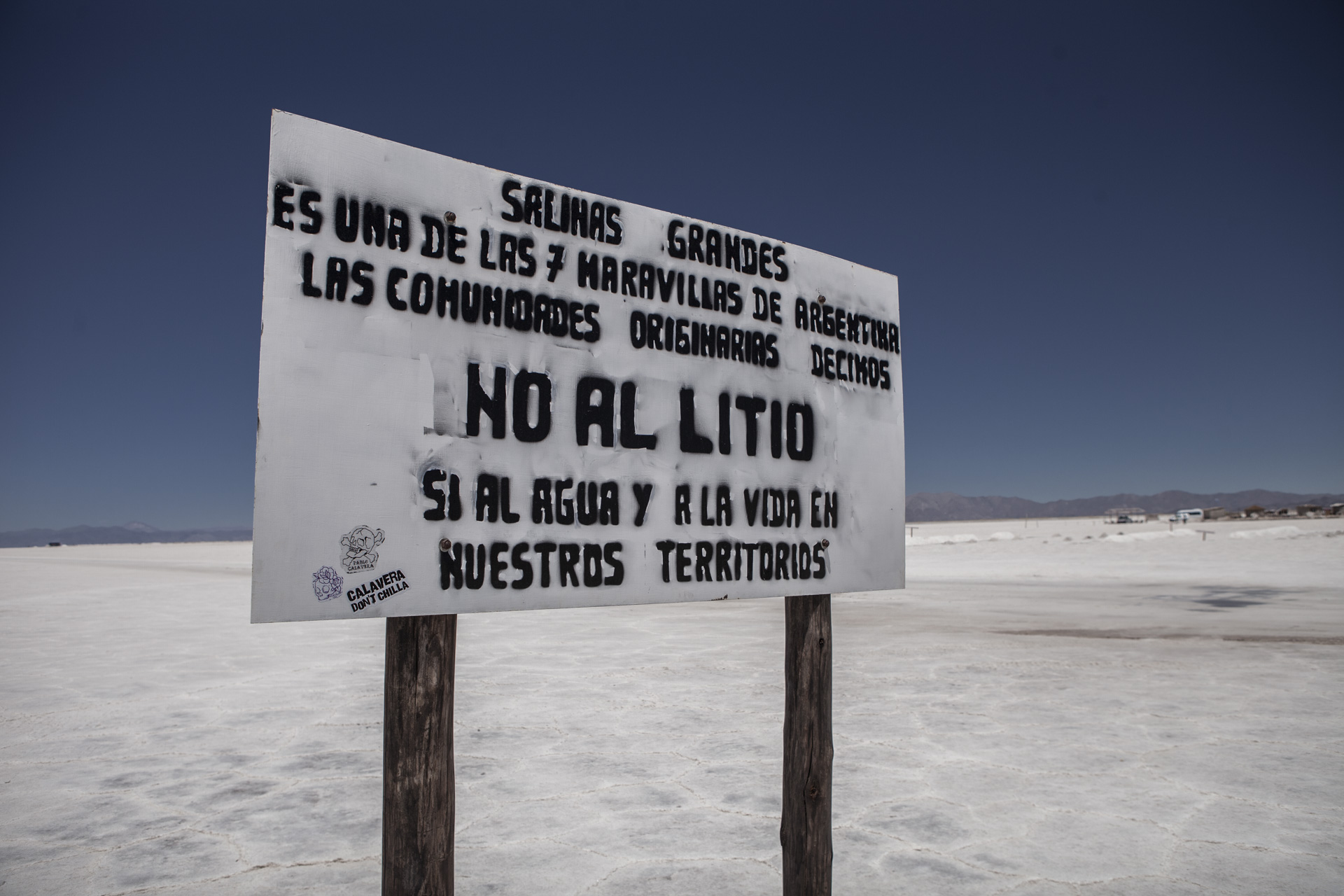
— And how would the intervention of the communities before granting exploration permits be? —asked Justice Maqueda, pen in hand, without turning away from the papers he was holding.
The process must be conducted by the State and not by the companies, they must consult the representatives chosen by the people and consider the cultural adaptation of the consultation, she clarified.
— But has the State consulted communities? — Justice Maqueda asked again.
Alicia answered no.
—Summarize it a little bit for me, because I still don’t understand what you’re asking for. What do you expect from the Court? From the sentence? — Justice Highton asked.
The completion of the consultation according to the international standards and within the framework of human rights, Alicia clarified once again.
Highton put his hands together and raised an eyebrow.
— For the Court, there has to be a concrete conflict. And this isn’t even a claim for declaratory judgment. It’s all very hypothetical, but I don’t see a case.
***
Nine months after the discussion on the 4th floor of the Courts, signed by the same four justices, the Court rejected the protection action, declared its incompetence and returned the case to provincial courts. But the communities gained visibility and, for a few years, the companies stopped pressing on Salinas Grandes. After James Anaya’s visit, then United Nations Special Rapporteur on the rights of indigenous peoples, and the actions lodged before the Inter-American Commission on Human Rights (IACHR), the years 2014 and 2015 went by somewhat calmly. Meanwhile, in Olaroz, the companies tried to get the communities to approve the lithium projects any way they could, but the 33 communities took advantage of the experience before the Court to draw up a consultation protocol.
— It took years of meetings to inform and discuss how they should be consulted according to their culture and way of life. In these assemblies, they began to deconstruct the hierarchical relationship between the official who knows and the ignorant community — says Pía Marcheghiani, Director of Environmental Policy of the Environment and Natural Resources Foundation (FARN, in Spanish,) which has been working with the communities since 2011.
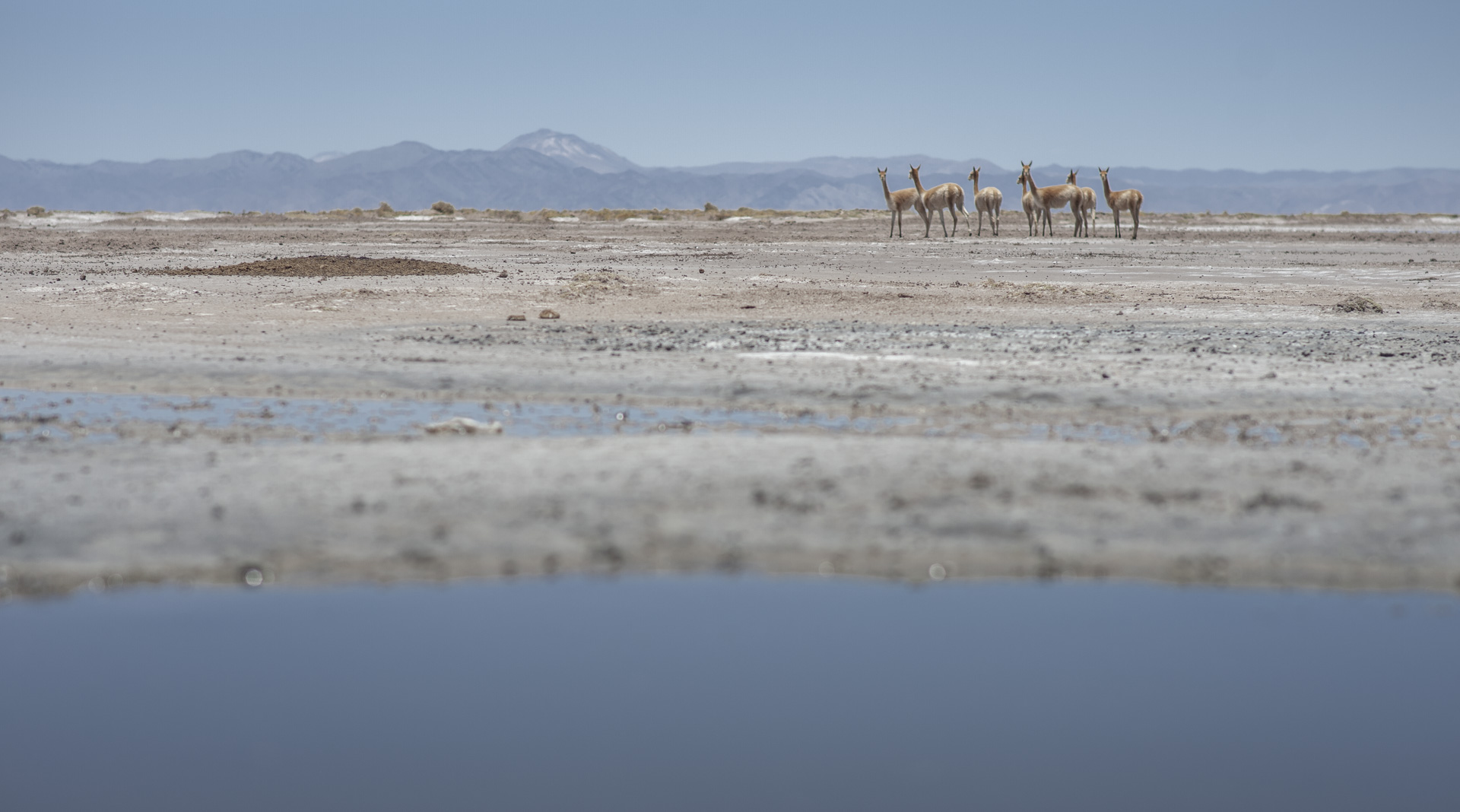
At the end of 2015, the first community biocultural protocol of Argentina was completed. It was named Kachi Yupi, which means ‘salt footprints’ in Quechua. They thought about it before dialoguing with the legal world and defending a territory-based worldview. Perhaps, this is why there are comparisons between the mineral’s harvest and the consultative process throughout its 42 pages: Just as there are times to harvest and to resolve, they say, there are also moments to let the salt and decisions rest, mature and crystallize.
At that time, Gerardo Morales took office as governor of Jujuy. He took note of the protocol and promised that he would recognize it through a decree. Four years later, the commitment is still on the to-do list. Moreover, the State did not guarantee the free, prior and informed consultation in accordance with international standards and continued the bidding processes carried out by JEMSE, while the mining companies entered the territories ignoring the voice of those who opposed them. Based on this new escalation, the communities of Salinas Grandes once again presented themselves before the Supreme Court, this time through an environmental protection action.
***
Two tourists take turns taking pictures. One moves away towards the horizon line and the other stretches out his hand to create an optical illusion, so it looks like he is holding his traveling companion in miniature. Others simply walk. They all wear t-shirts. It is noon. The sun hits straight.
A yellow tractor travels along the side of Route 52 until it reaches the only mining cooperative devoted to salt extraction in blocks in this white landscape.
On the road, it passes next to a sign installed at the main access for tourists during the roadblock on that day, February 24. It says: “Salinas Grandes. One of the 7 wonders of Argentina. The native communities say No to lithium. Yes to water and life in our territories.
Néstor Alberto is the president of the aboriginal community of Pozo Colorado, an adobe hamlet and gravel road half an hour’s drive from the salt flats. He has lunch with the workers of the cooperative. Only a group of four comes out of the shade to unload bags from a truck. They have their bodies completely covered. Their faces are covered with balaclavas and sunglasses. If they were outside a bank, they would look like a clichéd Hollywood heist gang. But, like Néstor, they work from dawn to dusk to earn an average of 16,000 Argentinian pesos (about 260 American dollars) per month. Sometimes they take a vacation.
— ¿Is it an unhealthy job?
Néstor makes an annoyed facial expression.
— ¿Unhealthy? We are the children of the earth, of the pacha. There is no harm here, neither for her nor for us, who have lived like this without mining, lithium or anything else. Happy. And that’s how we want to continue.
He is 51 years old and has five children and four grandchildren. They all study in the city and then “return with their knowledge and help the community.” He says he still has a long way to go before he stops working. His body is going to tell him when to stop. Like Inés, his eyes will never be seen. His mirrored glasses give him a bizarre surfer look. An Adidas scout hat covers his face, ears and neck.
The cooperative, to which he has belonged since its creation in 1993, currently employs 30 families in the communities of Pozo Colorado and San Antonio Tres Pozos. Working in the salt flats is the product of a predictable and historic progression for most of these communities’ men. Néstor speaks of working as an activity inherent to their development and his grandfather – and grandparents – as the main figures in transmitting the knowledge and worldview linked to work and respect for the land. As a child, he helped his family caring of animals. As he grew, he became more and more integrated into the white desert until knowing every single stage of the salt extraction process. “It’s the area’s livelihood,” he says.
—Since 2008, companies have been wanting to come explore and survey. And it’s always the same. They cause irreversible damage to the environment because they extract the water from salt flats. The amount of water taken out is larger than the amount entering and an imbalance appears.
11 years ago, the mining companies wanted to buy the salt production rights from Néstor’s cooperative. They offered them a million dollars, but the workers refused.
—”We’re going to kick out any company that comes, any way we can. If we have to spill blood to defend the Pachamama, we will,” says Néstor.
During the conflict last February, Néstor Alberto and other community members crossed the hills that separate them from the Cauchari – Olaroz basin to observe the consequences of the active mining project in that region.
— The water is already flowing down the slopes, the watering holes where animals drink from have dried up. It’s a shame how the place is being damaged.
In a 2018 report, hydrologist Marcelo Sticco, in collaboration with FARN, concluded that there is a “very probable risk of irreversible degradation of the freshwater reserves that lie on the edges of the basin and below the river fans.” According to the same report, the consequences will be “the breaking up of the surface soil of the current salt flats, the alteration of the surface water system and a significant impact on the ancestral salt harvesting process.”

In order to extract lithium carbonate, the companies evaporate an enormous amount of water in stream pools for 18 months, which comes from pumping the salt flats: Two million liters of brine per ton, aside from the fresh water used during the resource’s purification. In one research focused on the study and development of lithium, Victoria Flexer, a scientist at the Center for Energy and Advanced Materials in Jujuy, calculates that “for a salt flat with a concentration of 700 parts per million of lithium, 7,669,388 cubic meters of salt water would evaporate in an operation of 20,000 tons of lithium carbonate per year.” In other words, the same amount consumed by a city of 70,000 people in 12 months. In a region with rainfall lower than 200 millimeters per year, such activity generates a water imbalance. When the brine is extracted, the fresh water from the peripheral water layers moves to make up for what is needed, and it is irreversibly mixed and salinized.
Néstor describes Olaroz as a place that is perforated all over, with lots of movement and embankments all over the place and where communities no longer have free access.
— If you can’t move around freely somewhere, it means that it was privatized. We will never allow that.
***
Catua is 20 kilometres from the Cauchari salt flat and is one of the ten Atacama communities that live at the Olaroz-Cauchari basin. To get there, you have to cross a valley enclosed by brown hills with different red and yellow color schemes; one after the other, like the bellows of a colossus at 4,000 meters above sea level. On the ground, the desert is interrupted by patches of vegetation and eyes of water as big as a neighborhood swimming pool. It is divided by the boundary line with Chile, located approximately 35 km away.
Houses combine adobe, cement and metal sheeting. They have the hills’ colors. It’s five o’clock in the afternoon. The sun is cold. About 700 people live there, but there is no one on the streets, which are full of red and yellow garbage cans with a sign: South American Salars, Advantage Lithium. An open aqueduct runs through this town. The president of this mining company, Miguel Peral, came to convince the inhabitants of the benefits derived from the lithium extraction project in the Cauchari salt flat sector that corresponds to this community. If no conflict arises, works will begin in March.
Peral, together with his managers, gathered the community and promised that the project will begin works to pave the streets and build a natural gas pipeline that will free them from the daily grind of carrying gas cylinders. To reassure the population, they also showed the environmental tests that ensure there will be no ecological damage or other negative consequences for nature and people. The study was conducted by South American Salars itself.
For now, all you can hear is the wind. To talk to someone, you have to knock on houses’ doors.
The wood creaks. An old lady opens. She says she can prepare some food. It’s going to take a while. A sudden wind raises dust, which attacks eyes and mouth and, like a dying wave, returns to the plain.
—There’s only wind and dust here.
The food doesn’t matter anymore. The silence returns until a tanker truck that brings drinking water for the neighbors stops. The driver is Juan Nievas, a community member who prepares the minutes of the meetings in which Rosendo Gerón, president of the Coquena-Pueblo Atacama indigenous community, participates. Gerón works for the municipality. He is 50 years old and has seven children who live in San Salvador de Jujuy.
Already sitting at Nievas’s house, Geron goes from distrust to anxiety. A River Plate football team poster is the only ornament hanging. Geron speaks, while Nievas takes notes.
—We have no livestock, no agriculture, and no tourism. Mining is all we have. That is why the community’s support for the lithium projects is total. We know that in other communities it brought benefits to local businesses, such as catering services, passenger transport and lodging.
Geron never visited a lithium carbonate plant. He says there are no more than 20 unemployed people in Catua. Anyway, he’s convinced that his people’s prosperity is tied to the mining companies’ will.
—We have already approved everything with the province; so, God willing, we will soon have another mining company starting works in Cauchari.
However, the lithium industry – and the mining industry in general – does not seem to have an overwhelming labor potential in Argentina. A survey conducted in 2019 by the Inter-American Development Bank (IDB) indicated that “given the capital-intensive nature of the mining processes, a great impact on employment cannot be expected.” In Jujuy, this resulted – during 2018 – in 566 direct jobs related to lithium, including the 187 workers who –as of December of that year– were part of Exar’s permanent workforce and the 140 workers of Sales de Jujuy. In Catua, only 12 people are employed by the mining sector.
The Governor said that those of us who were against lithium mining had to stop using cell phones […] so are all those in favor of mining going to stop drinking water?
For other inhabitants of the area, the mining companies are synonymous with dispossession and new violence scenarios. The seven families comprising the Apacheta Collective were victims of threats and harassment in 2012, when one of them was beaten up and ended up in the hospital with several blows to his body.
This was Hipólito Guzmán, Carlos Guzmán’s brother, one of the leaders of this group around which they had been organized to oppose lithium extraction in the area. Hipólito was also part of the Assembly and rural commissioner of Susques. Shortly before the attack, he had already reported threats and verbal aggressions due to his anti-mining position.
—The people of the company and part of the community pointed at us: They said that we were rebels, that we didn’t let them work. Even Governor Gerardo Morales said that those of us who were against lithium mining had to stop using cell phones – says Carlos –. We asked ourselves, so are all those in favor of mining going to stop drinking water?
The assigned prosecutor No. 7, Osinaga Gallacher, intervened in the case but, years later, no progress was made regarding the real perpetrators of the aggression.
Violence also continues in the courts of law. This is what happened to Reinaldo Casimiro, who lives about two kilometers from the Cauchari salt flat, operated by the Exar, among others. Since the company installed its lithium plant in the area, he began to see his llamas, goats, donkeys and sheep thinning at a remarkable rate. The problem was not the animals, but their environment: they were running out of grass to eat. Casimiro confronted the mining company and the Provincial Secretary’s Office for Water Resources, which grants the permits for the quarries, through a preventive action. Shortly after, he became aware of a worrying detail: the defender of the company’s interests and the Justice representative were husband and wife.
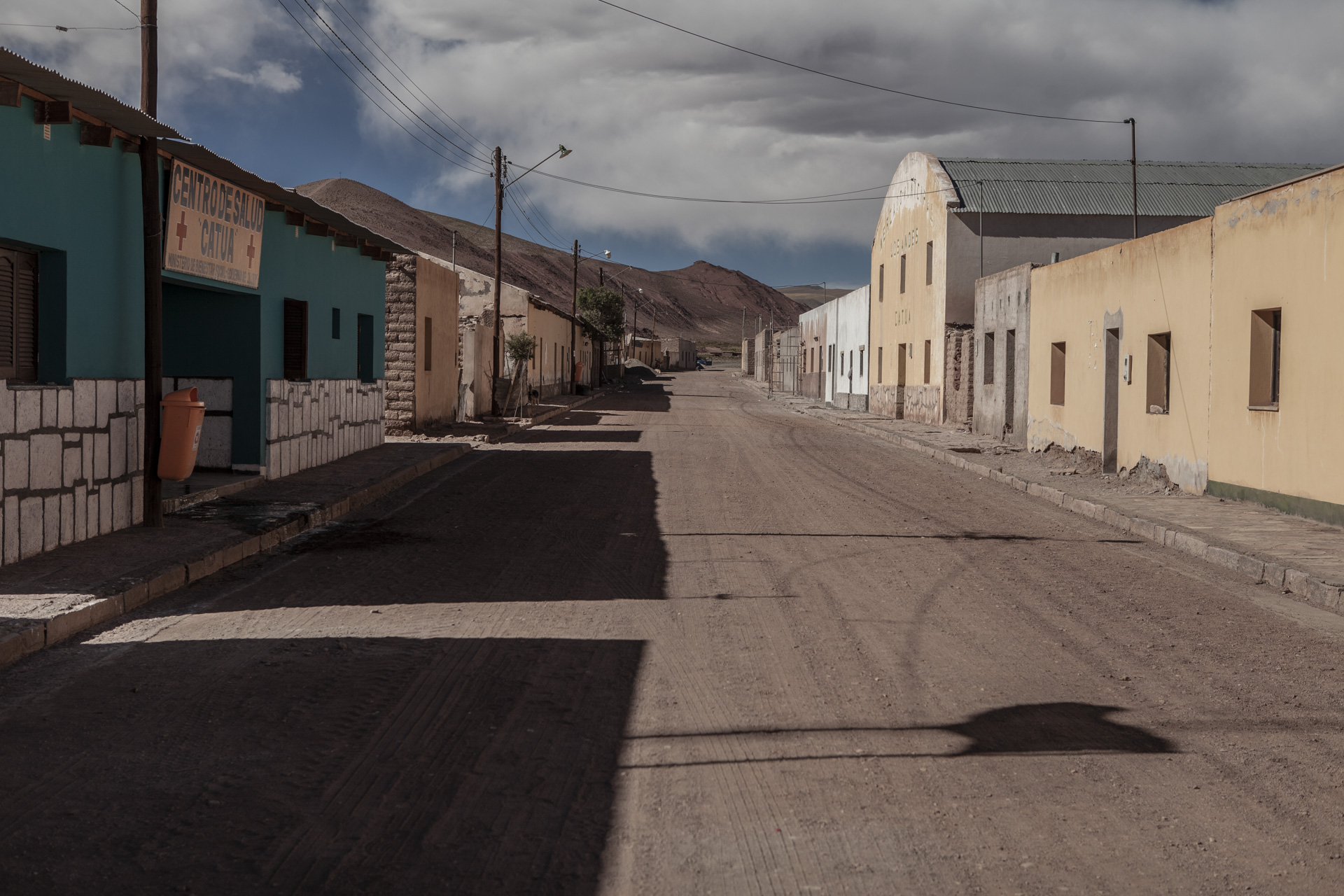
—The case is being addressed by María Laura Flores, judge of the first instance of the Environmental Court of Jujuy. Her husband is the lawyer Fernando Eleit, member of the Mining Chamber of Jujuy and of Lithium Corp and partner of a firm that provides advice for mining projects in the Northwest of Argentina. Everything stays in the family – says Chalabe, Casimiro’s lawyer.
In Jujuy, a province with a strong indigenous and peasant presence, territorial and environmental conflict is high and associated with the advances of monocropping, real estate projects and, of course, mining. As in a large part of the country, advances against leaders occur through repeated modalities: harassment, protest repression and, mainly, prosecution.
—The cases can be civil or criminal and are always directed against people who have an important place within the communities or who occupy part of the territory that others want – says Victoria Almeida, coordinator of the indigenous peoples’ rights area of the non-governmental organization ANDHES.
Casimiro is being harassed. They want him to leave and that’s why rumors began circulating that his family was not from Catua but from another town, Jamas. They blame him for the conflict and seek to turn the community against him, says Chalabe. He says that his children “will be very affected” because of the damage caused to their family since 2009.
—Exar claims it owns the place and intends to settle up free of cost. They have made so many pathways along the grass that neither he, his family or the animals can walk across,” Chalabe says.
***
As the world’s fourth lithium producer, Argentina is positioned as a donor of a basic and strategic resource for the central countries – says Bruno Fornillo, an expert in energy and geopolitics in South America. However, dollars coming in from these exports account for a low percentage: In 2017, from a total of 58 billion dollars in remittances, mining contributed 3.52 billion and lithium just 224 million.
What if there were initiatives that did not harm the environment or the communities’ rights? Could the State carry out a project to industrialize and add value to the resource? For the governments of the last decade, lithium was synonymous with the future, although that goal had a diffuse meaning.
During the last administration of President Cristina Fernández de Kirchner, there were several attempts to declare it a strategic mineral, but none caught on; its extraction matrix was not modified either. Since 2015, the Cambiemos alliance –which ruled the country until the end of 2019– deepened this pro-mining mentality even more by indiscriminately allowing the entrance of capital into provincial territories. It promoted a more flexible, new-age mining discourse tailored to the needs of transnational corporations. Today, the challenge is to break this trend.
—This may be the last chance to end the neo-dependence on the emerging technological pattern – Fornillo concludes.
***
For Melisa Argento, CONICET researcher who has been working since 2011 with the population of Salinas Grandes and the Guayatayoc Lagoon, the lithium conflict not only generated rejection, but also an identity strengthening process: the communities began to talk about a unique territory, a basin whose division is not subordinated to that of the Salta and Jujuy provinces. They coordinated efforts with communities of the Atacama Desert, in Chile, which experience similar or worse scenarios, as well as with assemblies of environmentalists. They went from resistance to the “Kachi Yupi” protocol, and from prior consultation to demanding that the projects leave the territories.
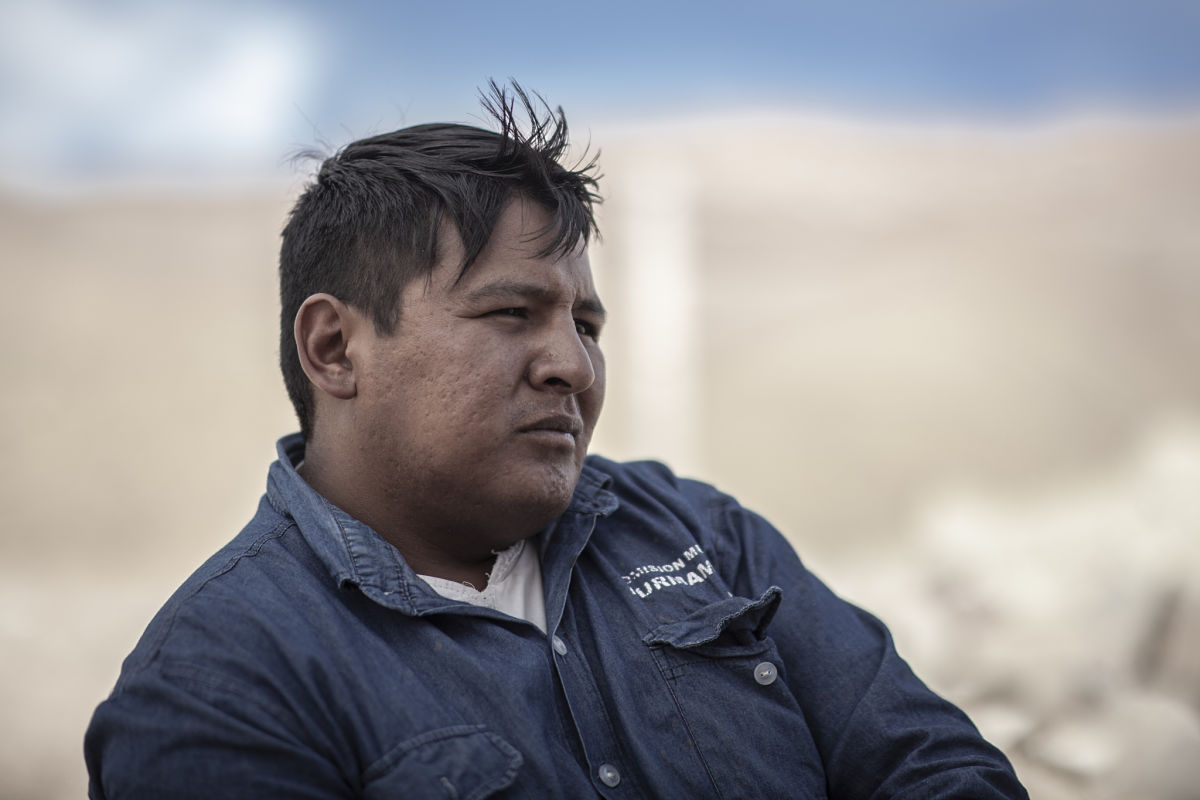
Eloy Quispe thinks something similar as he names the hills surrounding San Miguel de Colorados, the community he has presided over for a year and eight months: “El Condor, Huancar, Jarrunco, all of them are in danger,” he says, recalling the battles his ancestors fought for the land and against the various governments that tried to take it away from them. He speaks of the battles of Abra de la Cruz and Quera. Both occurred in the late nineteenth century in the Jujuyan Puna, the same one that today is again under threat of conquest, Quispe declares.
—The state is still pushing us around. First, it was the Spaniards, then the provincial governments, the national government. Lithium is just another step towards total resource expropriation.
Quispe’s five sons walk around while their father talks about wars, fear, and resistance.
—My fear is our legacy. What are we going to leave to the next generations? My fear is to harm Mother Earth. With pollution, everything will die. The ecosystem here has been changing for some time now. It rains less than before. It rains in one area, but not in another. The sky is overcast, but it doesn’t rain in the end. The Pozuelo lagoon is going to disappear because the rivers flowing into it are drying up.
He is 32 years old and a public servant of the Purmamarca Commissioner, the district which this town depends on, which began as an adobe village almost 200 years ago and currently has about 90 families.
In San Miguel de Colorados, those who do not work in the municipal sphere are devoted to growing potatoes, corn, barley, garlic, onions; and a little bit of livestock: goat, sheep, llama, cow. Others come to Salinas Grandes to work as tourist guides and sell their products, like Inés Lamas.
Quispe has a soft but firm voice. A subtle voice.
—A lot of companies came to promise us things, to offer us projects, jobs. The agreement says that the three parties have to be present: The State, the community and the company. What does the State do? It sends the mining companies, which only want to invest quickly, take out all the natural resources and take them away. The companies always look for the weakest link. If they want to move forward, there will be war.
This report was produced by Anfibia magazine as part of ‘Land of Resistance’ project focusing on attacks on environmental defenders in Latin America. It is republished here with permission.
